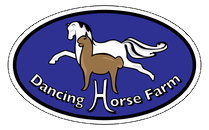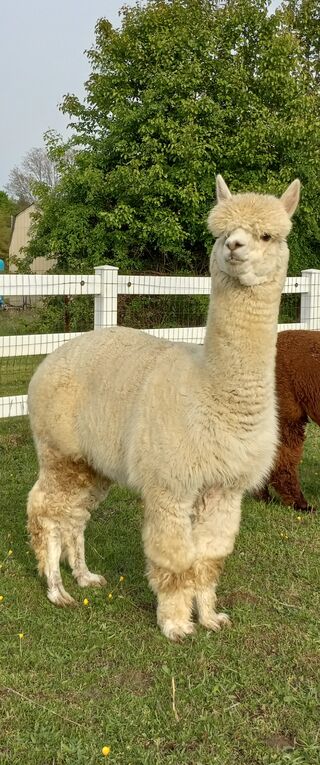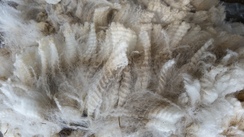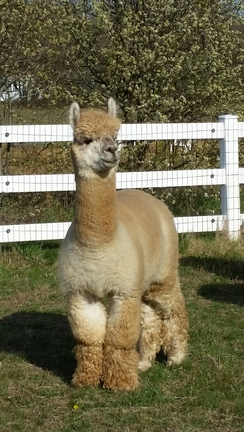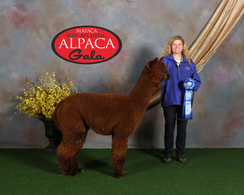The Costs & Benefits of Line Breeding Alpacas
Examples From One Herd
So we thought we should share what pedigree, medical, and performance data from the Accoyo America breeding program suggest to us about the implications of line breeding alpacas. In the analysis that follows, we discuss the relationship between line breeding and the birth rates, miscarriage rates, cria birth weights and cria growth rates the herd has experienced. This information may contribute to your understanding of the potential risks associated with line breeding alpacas. We also provide you with an example of when we use line breeding to create incremental genotypic progress within the herd above and beyond what we could achieve if we eschewed the process. Finally, we briefly discuss the trend in genetic diversity in the US alpaca herd, and its possible implications for individual herd management.
The coefficient of inbreeding and why it matters
Line breeding is the mating of two animals that share one or more common ancestors. The degree to which the resulting offspring is line bred, or inbred, is described by its coefficient of inbreeding, “F.” The coefficient of inbreeding represents the probability that, for any given gene, the two alleles that an animal inherits from its parents both come from the same ancestor in its pedigree, one passing through the sire’s line, and another through the dam’s. It is readily calculated using various software programs available for purchase.
A high coefficient of inbreeding can be established in a single generation, and reversed in a single generation. For example, a sire and dam can both have high coefficients of inbreeding themselves, but if they share no ancestors in common, their offspring will have a coefficient of inbreeding of 0%. Similarly, a sire and dam can each have inbreeding coefficients of 0%, but if they share one or more common ancestors they will produce an offspring with a positive coefficient of inbreeding.
In other livestock species, inbreeding has been shown to lead to decreases in general health and reproductive fitness (also referred to as hybrid vigor,) with negative impacts on breeding efforts. This is particularly true at and beyond levels of inbreeding which roughly correspond with mating half siblings. However, the higher degree of genetic homozygosity of animals that are inbred with regard to a genetically superior ancestor can also be associated with greater prepotency for producing positive traits in their offspring. This is the trade-off that we are trying to manage as breeders. As you might guess, the optimal approach is neither to avoid line breeding completely nor to use it without limits. Rather, it is to maximize the rate of genetic gain in a breeding program after adjusting for the negative effects of line breeding.
Looking for Adverse Effects
We monitor the impact of line breeding on the reproductive outcomes in our herd from several different perspectives. We have found that we experience a significantly higher rate of miscarriage in pregnancies where the coefficient of inbreeding of the fetus is higher than around 5% (p<0.05, Chi Square analysis.) However, we find no relationship between the coefficient of inbreeding of the crias in our herd and their birth weights or subsequent growth rates.
Within the range present in our herd, we also find no relationship between a dam’s own coefficient of inbreeding and her pregnancy rate, miscarriage rate, or the growth rate of her cria. The weight of crias born to relatively highly inbred dams is slightly under our farm average, but because we only have a few such dams working in our program, the result was not statistically significant. In other words, we have too little evidence to be sure that the lower birth weights are linked to line breeding, and not just a coincidence.
Taken together, these results suggest that the primary negative impact from line breeding at the relatively conservative levels at which the Accoyo America program tends to cap it is a higher miscarriage rate. Table 1 below shows results for 345 pregnancies as a function of the inbreeding coefficient of the fetus. (We confirm pregnancies via ultrasound at approximately 18-24 days gestation, and then again at around 60 and 120 days gestation, so our pregnancy and miscarriage data is very good, and catches many early pregnancies that other protocols would miss.) As it reveals, the base level of miscarriage we experience at very low or zero levels of inbreeding is around 18% of confirmed pregnancies. However, for pregnancies in which the cria has a coefficient of inbreeding of between 5% and 9.9%, the observed miscarriage rate is 50% higher than the base level, and the miscarriage rate for pregnancies with inbreeding coefficients of 10% or higher is nearly double the base level. These differences are statistically significant at the 95% confidence level, meaning we have a high degree of confidence that the difference is real and not coincidental. It is worth noting that an inbreeding coefficient of 5% is a lower threshold for experiencing such significant changes in miscarriage rates than seen in livestock like cattle, and may among other things reflect the possibility that some imported alpacas were related to other imports, information that is not available in our current pedigrees and would lead to the potential underestimation of the genetic relatedness of US-registered animals.
The primary impact of a higher miscarriage rate a function of time, in that it extends the average time it takes to: 1) produce a cria, which potentially reduces the number of crias a dam will produce in her lifetime; and 2) generate farm revenue from that cria. How much this matters depends on other aspects of a breeding operation: Programs that monitor pregnancies closely and breed year round, as ours does, will be less impacted by early miscarriages than those that breed only seasonally, or do not monitor pregnancies and therefore do not find out that their dam has slipped until much later.
The higher miscarriage rate of more highly inbred pregnancies likely reflects a higher rate of genetic defects in the embryos, ones that are significant enough that nature weeds them out for us before they are born. It is important to note that in other livestock species, an elevated rate of premature births and congenital defects have also been observed for highly line-bred offspring. We assume this will be the case with alpacas also, but because these events are much rarer than both miscarriages and unremarkable births, we do not yet have enough experiences of these adverse results to be able to detect and describe this effect. Nonetheless, we make the assumption that these negative effects are present, albeit at low frequency, and that the risk of experiencing them rises in a well-correlated way with the risk of experiencing the more common miscarriages.
In the Accoyo America program, once more inbred animals are born they perform like their less inbred counterparts with regard to growth rates and eventual reproductive success. As one example of this, Table 2 shows the miscarriage rate experienced as a function of the inbreeding coefficient of the dam. As you can see, dams with higher inbreeding coefficients have the same miscarriage rate as dams with lower or zero inbreeding coefficients. In another example, Chart 1 shows the birth weights of 140 crias as a function of their coefficients of inbreeding. The average birth weight of crias in this sample is approximately 16 pounds, and is shown by the orange bar on the chart. Here again, there is no clear indication of a meaningful impact from inbreeding within the range represented by the animals in the sample.
Examples of Positive Impacts
In reviewing the data presented above, some of you may have noted the Accoyo America program does not intensively line breed. This is true: The coefficient of inbreeding of its crias has averaged around 3% in recent years, and sire/dam pairings with coefficients of inbreeding above 6% (the rough equivalent of breeding two animals that share a common ancestor that is the grandparent of one of the animals and a great-grandparent of the other, with no other relatedness) are generally avoided unless there is a compelling reason for assuming the additional risks associated with more closely-related ancestry. Sometimes, however, there is such a reason: Line breeding the descendants of an ancestor that was exceptional for a particular trait or traits can improve the selection gain possible for that trait in the herd.
An example based on the genetics of this particular herd may be informative. The Peruvian import male Caligula was an exceptional animal with regard to the production of dense, heavily fleeced offspring. He was so much of an outlier that even today, almost a quarter-century after he was imported and 15 since he has died, his descendants continue to dominate the EPD rankings for fleece weight (EPD FW). In the current Accoyo America herd, of the 20 animals with the highest EPD FW, (17 female and three males,) all have Caligula appearing as an ancestor at least once in their pedigrees, and on average he has contributed 19% of their genetics, nearly double his 10% contribution to the genetics of the herd as a whole. The average EPD FW of these animals is, at 1.12, also double the herd average of 0.53, and would collectively place this group in approximately the top one-third of 1% of all the animals in the EPD database for this trait.
This is the breeder’s conundrum, and the line breeder’s incentive. Generally speaking, if we breed our heaviest-cutting animals to our lighter-cutting animals we will not be improving the average fleece weight of our crias. If on the other hand we allow ourselves to interbreed our genetically-related animals and use our heaviest cutting males with our heaviest cutting females, we will not only continue to produce very heavily-fleeced animals for our herd, but have a better chance of producing outliers from this group of offspring. These outliers in turn increase the potential for genetic improvement within the herd.
Here is a more specific way to think about it: Assuming the Accoyo America program’s current EPD accuracies for fleece weight, if each one of its top 20 EPD FW animals was bred to one that was average in the herd we would expect see produced just three animals that were better than their best parent in this respect. But if the top 20 were bred among themselves, we would expect to find that around half of those offspring were better than their best parent. That is a big difference, and enhances the ability to improve fleece weights in the herd more rapidly in the future.
Though you might not guess it based on the statistics regarding Caligula’s genetic contribution to this top 20, the three males in the herd’s top 20 for EPD FW can each be bred to all 17 females in that group without real concern about adverse effects from genetic interrelatedness. Only six of the possible pairings have coefficients of inbreeding higher than our 5% threshold for increased miscarriage risk (the maximum is just 6.2%), and the average coefficient of inbreeding on these pairings is, at 3.4%, only a little bit above our annual average coefficient of inbreeding. With no real reproductive or growth risks associated with line breeding at this level, and plenty of incentive in terms of improving fleece characteristics and producing genetic outliers, we are comfortable with line breeding in instances like this.
U.S. herd genetic trends and why they matter
The rapid and continuing diminishment of genetic diversity within the closed U.S. registered herd means that, going forward, it will be increasingly important for US breeders to be good stewards of genetic diversity even as they work with more genetically related animals on average. In other words, we need to be good managers of the evolution of the national phenotype and genotype, and make informed risk-reward tradeoffs between the two. Understanding the risks and rewards of line breeding is one part of this stewardship; the second part involves understanding the genetic trends we will be managing.
The genetic diversity of the US herd has decreased significantly since the U.S. registry was closed. While more specific quantification awaits the analysis of the breeding age and younger population of AOA registered animals, our own analysis of individual breeders’ herds suggest that the decrease is likely to be 80% or more. This has primarily occurred because of another, otherwise laudable practice by breeders, which is the intense selection pressure placed on males. Every time a male is designated a non-breeder, its genetics and some remaining portion of its ancestors’ are lost to future generations.
Here is an example from the Accoyo America herd. Of the 358 imported animals that contributed their genetics to the current herd, 243, or 68%, were female. However, just six of those founding females, or 2% of the total, have together contributed 22% of the total aggregate genome of the herd, largely via their herdsire sons. Meanwhile, of the 115 import males that have contributed genetics to the current herd, seven, or 6% of them, have contributed 34% of the herd’s genome. As a result of this contraction, one that was driven by breeding some animals more than others over time, the Accoyo America herd now has just 26 genetic “founder equivalents” in total, representing a loss of over 90% of the genetic diversity that was represented in its founders, assuming they were all unrelated. Again, to be clear, this is primarily due to selection pressure. (When the impact of incremental genetic bottlenecking due to line breeding in the program is incorporated, the number of founder equivalents drops by just one, to 25.) And while the genetic composition of individual herds like this one is further impacted by purchase and sale decisions, this is not true of the population of registered alpacas in the US, because the registry is closed to new entrants, and international sales of animals are too low to have a significant impact.
To be clear, the decreasing genetic diversity of the US herd is not a good reason to decrease the selection pressure you place on males. You should still breed only the best. Likewise, it is not a reason to choose to line breed or to avoid line breeding. A highly inbred animal may not be closely related to the rest of the US herd, and an animal with a coefficient of inbreeding of 0% might be more highly related to the U.S. herd than many inbred animals.
What the reality of decreasing genetic diversity does mean, though, is that when you believe you can achieve the same phenotypic and relevant genotypic breeding result while retaining a higher degree of genetic diversity, either in your own herd or more importantly within the US herd, you should probably do so. EPDs are an example of a breeding tool that, properly used, can help you identify animals that have the right combination of genotypic attributes for your herd but also would bring incremental genetic diversity, where that is desired. In our ideal world, animals in the AOA database would also have registry kinship coefficients calculated for them, so that we could see how related they were to the rest of the US herd on average, which would allow breeders to manage the genetic diversity of their herd relative to that of the US herd.
In the meantime, we encourage you to consider purchasing one of the pedigree management software packages available so that you can accurately describe and manage the genetics of your own breeding program. In addition to calculating coefficients of inbreeding, these software programs can also include features that will describe the genetic diversity of your herd in various ways, as well as indicate how prospective sire and dam pairings will affect it. As such, they provide a useful tool for alpaca breeders focused on being informed stewards of genetic assets, in their own herds as well as for the industry as a whole.
July 19, 2024
